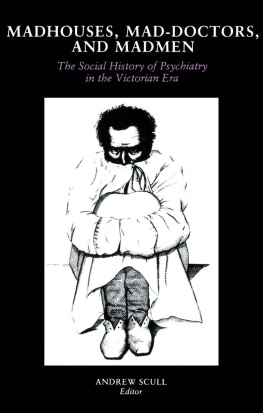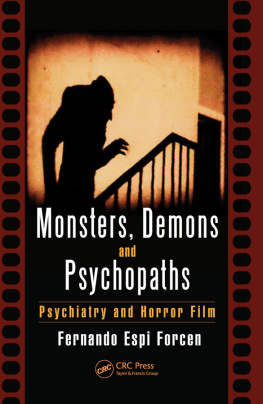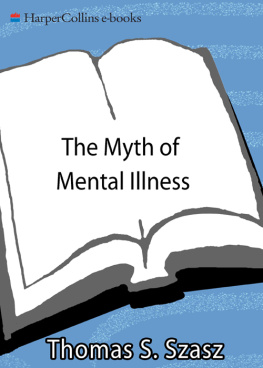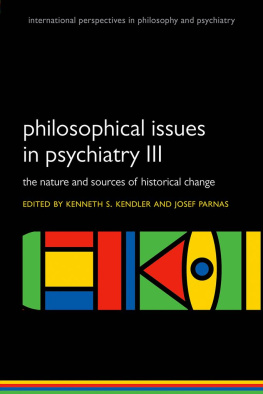Dostoyevskys Stalker and Other Essays on Psychopathology
and the Arts
Michael Sperber
University Press of America, Inc.
Lanham Boulder New York Toronto Plymouth, UK
Copyright 2010 by
University Press of America, Inc.
4501 Forbes Boulevard
Suite 200
Lanham, Maryland 20706
UPA Acquisitions Department (301) 459-3366
Estover Road
Plymouth PL6 7PY
United Kingdom
All rights reserved
Printed in the United States of America
British Library Cataloging in Publication Information Available
Library of Congress Control Number: 2009942079
ISBN: 978-0-7618-4993-3 (paperback : alk. paper)
eISBN: 978-0-7618-4994-0
Cover photo : BirdArt & BirdMan copyright Jeffrey Luke Sperber
Portions of this book have appeared in earlier versions in several journals and books over the years. Grateful acknowledgement is made to the following copyright holders:
American Imago, Camuss The Fall: The Icarus Complex (1969).
Current Psychiatry: The Case of the Quadriplegic Cyberterrorist (2002).
Journal of Analytical Psychology: The Daimonic: Freudian, Jungian and Existential Perspectives (1975).
Literature and Psychology: Shame and James Joyces The Dead (1991).
Provincetown Arts: Cloaked Shame: The Mask of Terrorism, Jo and Ed, Thoreaus Afternoon Walk.
Psychiatric Quarterly: Sensory Deprivation in Autoscopic Illusion (1969).
Psychiatric Times: Prison and the Mental Jail (2002).
Psychoanalytic Review: The As-if Personality and Chekhovs The Darling (1971); Thoreaus Hallucinated Mountain (2004).
` The paper used in this publication meets the minimum
requirements of American National Standard for Information
SciencesPermanence of Paper for Printed Library Materials,
ANSI/NISO Z39.48-1992.
For Schatzie...
and for
Lisa, Raul, Paul, Jeff, and Skip:
One word frees us
of all the weight and pain of life.
That word is love.
Sophocles
Preface
This collection of essays on psychopathology and the arts is based on the modus operandi of both medical psychologists and literary artists, and I pay homage to one with the following passage from his autobiography.
In his autobiography (1967), the American poet and author William Carlos Williams, a medical psychologist who practiced pediatrics, has this to say about his approach:
My medicine was the thing that gained me entrance to the secret gardens of the self. It lay there, another world, in the self. I was permitted by my medical badge to follow the poor, defeated body into these gulfs and grottos. And the astonishing thing is, that at such times and in such placesfoul as they may bejust there, the thing in all its greatest beauty, may be freed to fly for a moment guiltily about the room.
Dostoyevskys Stalker and Other Essays on Psychopathology and the Arts is a report of my journeys into the secret garden of the self, using my medical badge to follow the poor, defeated mind and spirit into the gulfs and grottos as a physician and teacher. After my visits into these gulfs and grottos, I would use the great works of literature, art, and cinema to understand what I had seen and teach others what I had learned. The idea for this approach came to me as a psychiatrist working and teaching in a prison and at a university.
In the courses at the prison, I presented a study of lives to provide inmates with positive role models (e.g., Mahatma Gandhi or Martin Luther King, Jr.) or negative role models (e.g., the Unabomber or Dostoyevskys Underground Man). In the university courses, I would present a particular psychopathological syndrome or disorder in connection with a character in a movie (e.g., Woody Allens Zelig) to illustrate identity diffusion; or a work of art (e.g., Grant Woods American Gothic ) to depict a certain type of marital disharmony.
The writer, cineaste, or painter often presents vivid details of such psychological problems, arranging them in so telling a fashion that they become memorable to studentsthe thing in all its greatest beauty [is] freed to fly
... about the room. Through their art, they make the world more comprehensible. This anthology considers the ways art accomplishes this, and, combining it with the approach of medical psychology, it enables readers to become participant-observers of the human heart in conflict and the sufferings of the psyche. Balance is essential: too much the observer, we are cold fish, but too participatory, we become part of the problemand in both instances, we lose our perspective. The chapters that follow grew out of not only my presentations but a search for this balanced perspective, and their insights are a badge for all to enter the secret gardens of the self.
Acknowledgments
Over the years, I have had the good fortune to meet a handful of people whose interest in art, music, or literature overlapped with their enthusiasm for abnormal psychology and psychiatry.
This began in high school with my English teacher, William F. Marvin, M.A., also a psychologist, who got me off to a good start. Bill would enter the classroom, smile, lean forward, wait until he had everyones attention, and then read a poem or a short story, sometimes without even providing the authors name or the books title.
Anton Chekhovs Misery comes to mind. This story is not only about the grief of a Russian sleigh-driver whose son recently died, but above all the drivers misery resulting from his futile efforts to share the heartache with his passengers, who are too busy to hear his woe.
After the long, contemplative silence usually following Bills presentations, he would lead a lively discussion about the psychology involvedin this case, the human need to share pain. In Chekhovs story, the despair of the Russian sleigh-driver, Iona Potapov, is evident. Settled into a fetal-like position in the carriage, snow falling all about him, he is dead to the world,
all white like a ghost. He sits on the box without stirring, bent as double as the living body can be bent. If a regular snowdrift fell on him it seems as though even then he would not think it necessary to brush it off.
At the days end, when the driver is comforted by the horse, who seems to hear his despair, the relationship between psychology and the arts is as clear as the way cadaverous Potapovs life is restored by his little mare munching her oats, who seems to listen, breathing on his hands.
Many years later, I taught a course in Harvards Social Relations Department, Personality Syndromes Through Literature. Picking up where Bill left off, that course and this book are ways of expressing my gratitude
although he is long since dead.
I am also grateful to two other mentors for questions they posed, twenty years apart. In 1966, after accepting my essay Camus The Fall : The Icarus Complex for publication in American Imago , Professor Henry A. Murray, eminent Melville scholar and creator of the Thematic Apperception Test, asked, What do you think is the clinical significance of that complex? It surprised me that the man who delineated the Icarus complex would be perplexed about its relevance.
Two decades later, I found the answer to Murrays question in another context. After a presentation to the Thoreau Society in 1982, Thoreau and Mental Health, the leading Thoreau scholar at the time, Professor Walter Harding, told me he had culled all of Thoreaus dreams from his writings, but was baffled as to their meaning. Do you think depth psychology can illuminate them? he asked. We met regularly in the little house behind the church in Concord, using Walts The Days of Henry Thoreau , to understand the poet-naturalists night life.
When we came to Thoreaus recurrent Rough-Smooth nightmare, which he averred was like his life, an alternate... Insanity and Sanity , it became clear to me that Thoreau had experienced bipolar (manic-depressive) disorder from his early years. Again, literature and psychology: the high-flying Icarian imagery Thoreau used is indicative of mania, and the subterranean and labyrinthine imagery, which I called Daedalian, is suggestive of depression.











